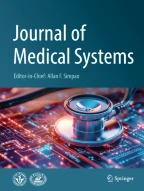Abstract
A smartcard-based authentication and key agreement scheme for telecare medicine information systems enables patients, doctors, nurses and health visitors to use smartcards for secure login to medical information systems. Authorized users can then efficiently access remote services provided by the medicine information systems through public networks. Guo and Chang recently improved the efficiency of a smartcard authentication and key agreement scheme by using chaotic maps. Later, Hao et al. reported that the scheme developed by Guo and Chang had two weaknesses: inability to provide anonymity and inefficient double secrets. Therefore, Hao et al. proposed an authentication scheme for telecare medicine information systems that solved these weaknesses and improved performance. However, a limitation in both schemes is their violation of the contributory property of key agreements. This investigation discusses these weaknesses and proposes a new smartcard-based authentication and key agreement scheme that uses chaotic maps for telecare medicine information systems. Compared to conventional schemes, the proposed scheme provides fewer weaknesses, better security, and more efficiency.
Similar content being viewed by others
References
Lambrinoudakis, C., and Gritzalis, S., Managing medical and insurance information through a smart-card-based information system. J. Med. Syst. 24(4):213–234, 2000.
Zhu, Z., An efficient authentication scheme for telecare medicine information systems. J. Med. Syst. 36(6):3833–3838, 2012.
Wu, Z. Y., Lee, Y. C., Lai, F., Lee, H. C., and Chung, Y., A secure authentication scheme for telecare medicine information systems. J. Med. Syst. 36(3):1529–1535, 2012.
He, D. B., Chen, J. H., and Zhang, R., A more secure authentication scheme for telecare medicine information systems. J. Med. Syst. 36(3):1989–1995, 2012.
Wei, J., Hu, X., and Liu, W., An improved authentication scheme for telecare medicine information systems. J. Med. Syst. 36(6):3597–3604, 2012.
Lee, T.-F., and Liu, C.-M., A secure smart-card based authentication and key agreement scheme for telecare medicine information systems. J. Med. Syst. 2013. doi:10.1007/s10916-013-9933-8.
Juang, W., Efficient password authenticated key agreement using smart cards. Comput. Secur. 23:167–173, 2004.
Fan, C. I., Chan, Y. C., and Zhang, Z. K., Robust remote authentication scheme with smart cards. Comput. Secur. 24:619–628, 2005.
Juang, W. S., Chen, S. T., and Liaw, H. T., Robust and efficient password-authenticated key agreement using smart card. IEEE Trans. Ind. Electron. 55:2551–2556, 2008.
Sun, D. Z., Huai, J. P., Sun, J. Z., Li, J. X., Zhang, J. W., and Feng, Z. Y., Improvements of Juang et al’.s password-authenticated key agreement scheme using smart cards. IEEE Trans. Ind. Electron. 56:2284–2291, 2009.
Yeh, K. H., Su, C., Lo, N. W., Li, Y. J., and Hung, Y. X., Two robust remote user authentication protocols using smart cards. J. Syst. Softw. 83:2556–2565, 2010.
Li, X. X., Qiu, W. D., Zheng, D., Chen, K. F., and Li, J. H., Anonymity enhancement on robust and efficient password-authenticated key agreement using smart cards. IEEE Trans. Ind. Electron. 57:780–793, 2010.
Xiao, D., Liao, X., and Deng, S., A novel key agreement protocol based on chaotic maps. Inf. Sci. 177:1136–1142, 2007.
Han, S., Security of a key agreement protocol based on chaotic maps. Chaos, Solitons Fractals 38:764–768, 2008.
Xiao, D., Liao, X. F., and Deng, S. J., Using time-stamp to improve the security of a chaotic maps-based key agreement protocol. Inf. Sci. 178:1598–1602, 2008.
Yoon, E. J. and Yoo, K. Y., A new key agreement protocol based on chaotic maps. Proceedings of The Second KES International Symposium on Agent and Multi-Agent Systems: Technologies and Applications (KES-AMSTA’08), 897–906, 2008.
Tseng, H., Jan, R. and Yang, W., A chaotic maps-based key agreement protocol that preserves user anonymity. IEEE Int. Conf. Commun. (ICC09), 1–6, 2009.
Wang, X., and Zhao, J., An improved key agreement protocol based on chaos. Commun. Nonlinear Sci. Numer. Simul. 15:4052–4057, 2010.
Guo, X. F., and Zhang, J. S., Secure group key agreement protocol based on chaotic hash. Inf. Sci. 180:4069–4074, 2010.
Niu, Y., and Wang, X., An anonymous key agreement protocol based on chaotic maps. Commun. Nonlinear Sci. Numer. Simul. 16:1986–1992, 2011.
Xue, K., and Hong, P., Security improvement on an anonymous key agreement protocol based on chaotic maps. Commun. Nonlinear Sci. Numer. Simul. 17:2969–2977, 2012.
Kocarev, L., and Tasev, Z., Public-key encryption based on Chebyshev maps. Proc. Int. Symp. Circ. Syst. 3:III-28–III-31, 2003.
Mason, J. C., and Handscomb, D. C., Chebyshev polynomials. Chapman & Hall/CRC, Boca Raton, 2003.
Bergamo, P., D’Arco, P., Santis, A., and Kocarev, L., Security of public-key cryptosystems based on Chebyshev polynomials. IEEE Trans. Circ. Syst.-I 52:1382–1393, 2005.
Guo, C., and Chang, C. C., Chaotic maps-based password-authenticated key agreement using smart cards. Commun. Nonlinear Sci. Numer. Simul. 18:1433–1440, 2013.
Hao, X., Wang, J., Yang, Q., Yan, X., and Li, P., A chaotic map-based authentication scheme for telecare medicine information systems. J. Med. Syst. 37:9919, 2013. doi:10.1007/s10916-012-9919-y.
Acknowledgments
The authors would like to thank the editor and the anonymous referees for their valuable comments. This research was supported by National Science Council under the grants NSC102-2221-E-320-003. Ted Knoy is appreciated for his editorial assistance.
Author information
Authors and Affiliations
Corresponding author
Rights and permissions
About this article
Cite this article
Lee, TF. An Efficient Chaotic Maps-Based Authentication and Key Agreement Scheme Using Smartcards for Telecare Medicine Information Systems. J Med Syst 37, 9985 (2013). https://doi.org/10.1007/s10916-013-9985-9
Received:
Accepted:
Published:
DOI: https://doi.org/10.1007/s10916-013-9985-9
